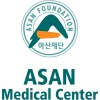
Panobinostat or Placebo With Bortezomib and Dexamethasone in Patients With Relapsed Multiple Myeloma...
Multiple MyelomaPanobinostat (LBH589) is a highly potent pan-deacetylase inhibitor (pan-DACi), inclusive of HDAC6, which disrupts aggresome function, promotes accumulation of cytotoxic misfolded protein aggregates and triggers myeloma cell death. Combination of pan-DAC and protease inhibition by co-treatment with panobinostat (PAN) and bortezomib (BTZ) has demonstrated synergistic cytotoxicity in vitro and in vivo in pre-clinical experiments. Furthermore, clinical experience in advanced multiple myeloma (MM) patients treated by oral panobinostat and i.v bortezomib ± dexamethasone showed very encouraging results for efficacy and manageable toxicity profile. Given the medical need for improved treatment strategies for patients with previously treated and relapsed MM, the purpose of this prospective, multinational, randomized, double-blind, placebo-controlled, parallel group Phase III study is to compare the results in progression-free survival of 2 combination therapies, panobinostat with bortezomib and dexamethasone or placebo with bortezomib and dexamethasone, in patients with previously treated MM whose disease has recurred or progressed.

Safety and Efficacy of TKI258 in Relapsed or Refractory Multiple Myeloma Patients, Who Are With...
Relapsed or Refractory Multiple MyelomaThis study will evaluate safety and efficacy of TKI258 in patients with relapsed or refractory multiple myeloma

Lenalidomide + Azacitidine for Adaptive Immunotherapy -> Auto SCT in Multiple Myeloma
Multiple MyelomaRATIONALE: Lenalidomide may stimulate the immune system in different ways and stop cancer cells from growing. Drugs used in chemotherapy, such as azacitidine, work in different ways to stop the growth of cancer cells, either by killing the cells or by stopping them from dividing. An autologous stem cell transplant may be able to replace blood-forming cells that were destroyed by lenalidomide and azacitidine. Giving autologous lymphocytes after the transplant may help destroy any remaining cancer cells. PURPOSE: This pilot trial is studying how well giving lenalidomide together with azacitidine works when followed by autologous stem cell transplant and autologous lymphocyte infusion in treating patients with multiple myeloma.

Donor Natural Killer Cells After Donor Stem Cell Transplant in Treating Patients With Advanced Cancer...
Brain and Central Nervous System TumorsChronic Myeloproliferative Disorders8 moreRATIONALE: Giving an infusion of natural killer cells from a donor after a donor stem cell transplant may help kill any remaining cancer cells after the transplant. PURPOSE: This phase I/II trial is studying the side effects and best dose of donor natural killer cells when given after a donor stem cell transplant in treating patients with advanced cancer.

Dose-Reduced Allogeneic Stem Cell Transplantation After Autologous High-Dose Chemotherapy in Patients...
Multiple MyelomaStem Cell TransplantationTo evaluate the feasibility and efficacy of a autologous stem cell transplantation followed by a Melphalan/ Fludarabine based dose-reduced allograft from HLA-identical and HLA-compatible unrelated donor in patients with Multiple Myeloma. In those with non complete remission DLI and/ or new agents such as Bortezomib, Thalidomid or Lenalidomide can be used to upgrade remission.

Study To Evaluate Safety and Efficacy of P276-00 in Subjects With Refractory Multiple Myeloma
Relapsed and/or Refractory Multiple MyelomaThe purpose of this study is to determine safety of P276-00 in patients with advanced multiple myeloma and whether P276-00 is effective in the treatment of advanced cases of multiple myeloma.

Study of Vorinostat (MK-0683) or Placebo, in Combination With Bortezomib in Participants With Multiple...
Multiple MyelomaStudy of the efficacy and safety of bortezomib administered in combination with vorinostat in patients with relapsed or refractory multiple myeloma. Histone deacetylases (HDAC) facilitate gene transcription by modulating the uncoiling of chromatin. HDAC function is dysregulated in hematologic and solid malignancies, and this dysregulation may result in over-expression of oncogenes. Thus, inhibition of HDACs may result in anti-cancer effects. HDAC inhibitors, like vorinostat, represent a new class of antitumor agents that have the ability to induce antiproliferative effects including cyto-differentiation, cell cycle growth arrest or apoptosis in various cancer cell lines. Several studies have investigated the in vitro antimyeloma activity of vorinostat in combination with bortezomib and have demonstrated that vorinostat may act synergistically with bortezomib to modulate tumor cell growth. Mitsiades et al have shown that vorinostat enhances the sensitivity of bortezomib. Pei et al found that exposure of human multiple myeloma cell lines & patient-derived multiple myeloma cells to bortezomib and vorinostat resulted in synergistic interactions as a result of: (1) Interruption of NF-kB & related signaling pathways (JNK, XIAP, Mcl-1, etc.) (2) Inhibition of Hsp90 (3)Induction of ER stress signal and (4) acetylation of Dynein/disruption of aggresome function/formation, salvage for ubiquitinated proteins. In addition a marked increase in mitochondrial injury, caspase activation, and apoptosis was also observed. Bortezomib is indicated for the treatment of patients with multiple myeloma. Two Phase I dose-ranging studies of a regimen combining vorinostat and bortezomib among patients with relapsed as well asend-stage, refractory multiple myeloma have been conducted. These studies enrolled a total of 57 patients. In these studies, administration of vorinostat with standard doses of bortezomib resulted in responses in 20/45 (44%) evaluable patients (Weber et al 2007, Badros et al 2007). The purpose of the present study is to definitively evaluate the clinical activity of vorinostat in combination with bortezomib inpatients with multiple myeloma.

Study of Vorinostat (MK0683), an Histone Deacetylase (HDAC) Inhibitor in Combination With Bortezomib...
Relapsed or Refractory Multiple MyelomaThe purpose of this study is to evaluate the clinical activity of vorinostat in combination with bortezomib in participants with relapsed or refractory multiple myeloma after at least 2 prior treatment regimens. The primary objective is to define the objective response rate (RR) associated with the administration of vorinostat in combination with bortezomib to patients with relapsed and refractory multiple myeloma after at least 2 prior treatment regimens. The primary hypothesis of the study is the administration of vorinostat in combination with bortezomib will result in a clinically meaningful rate of objective response.

Lenalidomide With or Without Dexamethasone in Treating Patients With Newly Diagnosed Multiple Myeloma...
Multiple Myeloma and Plasma Cell NeoplasmRATIONALE: Lenalidomide and dexamethasone may stop the growth of multiple myeloma by blocking blood flow to the tumor. PURPOSE: This phase II trial is studying how well lenalidomide works with or without dexamethasone in treating patients with newly diagnosed multiple myeloma.

Anakinra With or Without Dexamethasone in Treating Patients With Smoldering or Indolent Multiple...
Multiple Myeloma and Plasma Cell NeoplasmRATIONALE: Some cancers need growth factors which are made by the body's white blood cells to keep growing.Anakinra may interfere with the growth factor and stop multiple myeloma from growing. Dexamethasone may stop cancer cells from growing. Giving anakinra together with dexamethasone may be an effective treatment for multiple myeloma. PURPOSE: This phase II trial is studying how well anakinra works when given with or without dexamethasone in treating patients with smoldering myeloma or indolent multiple myeloma.
